Very high magnitude earthquakes make the unimaginable happen. They bring damage and devastation. But they also teach us. It is our job to learn from them, so that we can be prepared for the next one.
San Francisco earthquake, 18 April 1906
European settlers first arrived in San Francisco in the late 18th century. In the mid-19th century, thousands of people were attracted to California by the gold rush. San Francisco’s population quickly increased from 1,000 to 25,000 between 1848 and 1849. The city rapidly grew as a modern cosmopolitan city, some calling it the Paris of the West. By the early 20th century, San Francisco was the 9th largest city in the United States and the largest on the west coast, with a population of 410,000. It was the “Gateway to the Pacific”.
In the early morning of 18 April 1906, the San Francisco Bay Area was strongly shaken by an earthquake, which had an estimated magnitude of 7.9. The earthquake was preceded by a strong foreshock lasting 20 to 25 seconds and followed by several aftershocks. Over 3,000 people died and more than 80% of the city was destroyed.
The terrible destruction of San Francisco was in large part due to the fires that broke out after the earthquake. Fires were initially caused by rupturing gas mains and worsened by buildings that were dynamited by firefighters in an effort to create firebreaks that would stop the fire. In three days, the fires devoured 25,000 buildings, destroying 490 city blocks. At the time, standard insurances protected houses against fire but not earthquake damage, which led some to willingly let the fires complete what the earthquake had begun.
Federal troops were quickly dispatched to the city in the aftermath of the earthquake to keep order, in response to rioting and looting. In spite of the widespread destruction, people and leaders of San Francisco did not lose spirit and quickly engaged in planning and reconstruction. Even though San Francisco was quickly re-built, the city lost trade, industry, and population south to Los Angeles, which boomed during the 20th century.
Seismology was at its dawn in 1906. The first seismometers were being developed over the world, allowing for a scientific interpretation of ground vibrations. By then, the most accepted explanation for earthquakes was that fluids moving under the surface of the Earth caused the ground to shake, sometimes making the surface break. After the 1906 earthquake, geologists carefully surveyed the Bay Area and mapped displacement across what is now known as the San Andreas fault. Based on the observations, Henry Reid proposed that the ground motion was actually due to a sudden motion across a fault, which had been previously deformed in like an elastic, storing energy. This is known as the theory of elastic rebound, and remains today as one of the pillars of earthquake seismology.
Tohoku earthquake, 11 March 2011
This violent, 9.1-magnitude earthquake shook the entire country of Japan in more ways than one. It was the most powerful earthquake in Japan ever recorded by seismometers, and the fourth most powerful earthquake in the world since modern record-keeping began in 1900. Its epicentre was off the eastern coast of Japan, and everyone in the country knew that meant a tsunami was going to hit the shores in a very short time. When the tsunami warning was issued, inhabitants in coastal areas knew to run to higher ground.
People did what they could. They climbed to the tops of buildings, into vertical shelters, ran to hills, and escaped inland to pre-defined safe concentration zones. When the tsunami hit, it wiped out entire buildings—leaving cars, walls, wood, and other debris floating in its waters. Many seawalls were useless. Even the new seawall in Kamaishi was not enough to stop the water. Miyako suffered the strongest tsunami impact with maximum inland inundation reaching 38 m above sea level. Imagine, that’s about 12 stories high. Coastal cities all over Japan were devastated by the waters running through the city and taking everything with them. The waves also hit other coastal areas all over the Pacific Ocean. Even the coast of Chile, 17,000 kilometres from the epicentre, saw waves exceeding two meters hit its shores.
The damage from the tsunami was much worse than that caused by the quake itself. The tsunami swept the Japanese mainland and caused 15,896 deaths and 6,157 injuries. Currently, 2,537 people are still missing. It was also the costliest natural disaster in world history, estimated at over 250 billion euros.
The Fukushima Nuclear Power Plant was set along the eastern coast of Japan. It was an ageing plant, but it was still running. The earthquake knocked out power to all three back-up units in operation at the nuclear plant. The back-up generators, designed to make sure that the cooling systems continued cooling the reactors, started up after the ground stopped shaking. But when the tsunami flooded the plant, the fuel in the back-up generators was washed out, making cooling operations impossible. The reactors started heating up, causing hydrogen explosions and exposing spent nuclear fuel pools to the atmosphere. Seawater was injected into one of the reactors to cool it down, but explosions kept occurring for days. Of the six reactors in the power plant, four suffered serious to very serious damage.
Even several years after the catastrophe, the people of Fukushima were not able to live in their homes.
Did you know?
It is well known that earthquakes can have devastating effects. Sometimes, they cause cities to be fully abandoned and can even change the course of history of a region or country.
Earthquake ground motion can be extremely strong. Sometimes the ground shakes with accelerations that can be higher than g—the acceleration of gravity. This results from the release of a large amount of energy in a very short time.
Other risks can be triggered by earthquakes, which can be equally if not more destructive, such as fires, tsunami, landslides, liquefaction, etc.
How different countries prepare their people for the risks inherent to earthquakes has an enormous impact on the damage and fatalities that result from earthquakes.
From the scientific point of view, much is learned from big, rare earthquakes. It is our job to make sure that we learn the lessons and put them to good use to mitigate future earthquake risk.
Since we cannot control earthquake hazards and because society needs for exposure to be controlled, the best way for a society to reduce earthquake risk is to build safely and prepare, reducing our vulnerability.
The San Francisco earthquake rupture was a strike-slip fault ~480 km in length. Nearly the length of Portugal mainland from north to south! In a strike-slip fault, the blocks slide along each other along a nearly vertical plan. The largest slip on the fault was estimated to be 8.5 m. If this type of earthquake occurs under the ocean then the tsunami generated is much smaller than it would be if the fault was normal or reverse.
The Tōhoku earthquake was so strong that it shifted the Earth on its axis by 10 cm to 25 cm, and it caused Earth to rotate a bit faster, shortening the length of the day by about 1.8 microseconds.
The Tōhoku earthquake ruptured one segment of the subduction zone between the Pacific plate (to the East) and the Okhotsk microplate with a thrust fault. This fault is estimated to be 500 x 200 km2 and the slip between the two blocks might have exceeded 40 m in places, higher than a 12-storey building. Shallow thrust faults are very effective in generating tsunamis.

Fires engulfing downtown San Francisco, viewed from Twin Peaks, looking down at Eureka Valley, with Market Street at the centre.
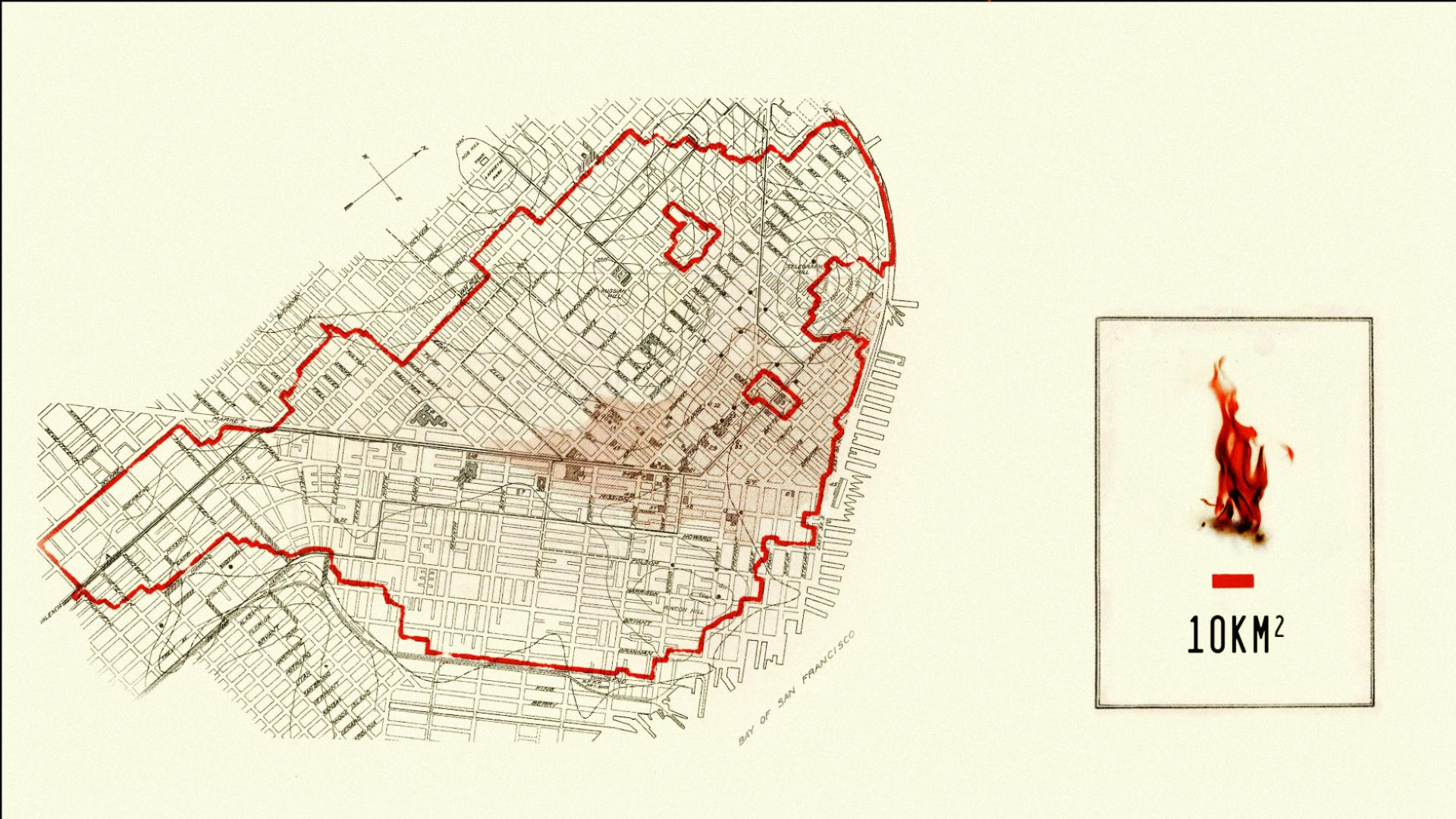
Area destroyed by the fires. Many people were trapped between water on the three sides of the San Francisco Peninsula and the advancing fire. A mass evacuation across the water saved thousands of lives.
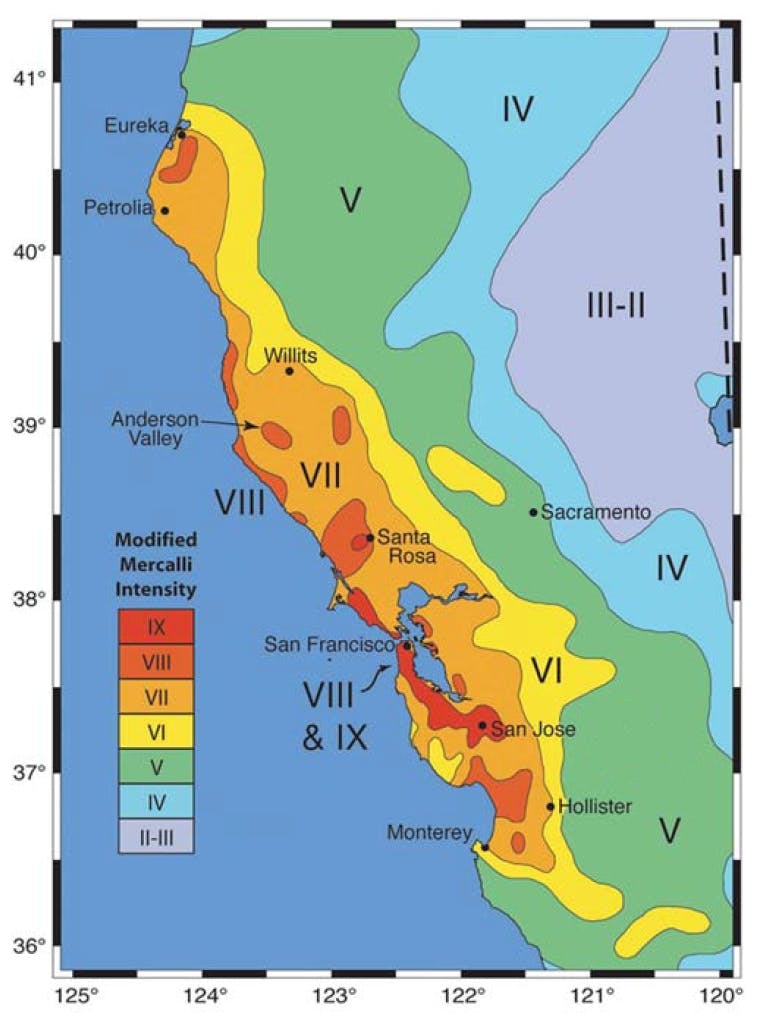
The severity of the ground motion of strong earthquakes is estimated using macroseismic intensity. The figure shows the Modified Mercalli intensity for the San Francisco 1906 earthquake. Damages in buildings occur for intensity greater than V. For intensity VIII earthquakes (severe), considerable damage occurs in ordinary buildings and some suffer partial collapse. Damage is great in poorly built structures.
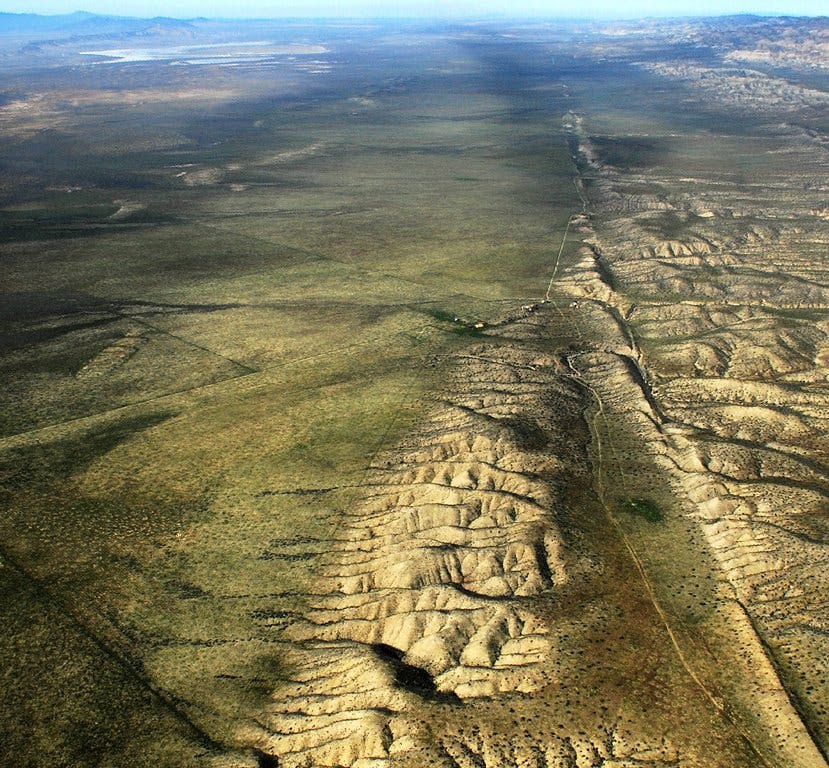
The San Francisco earthquake was generated by the sudden slip of a ~480 km long sector of the San Andreas fault. The continued movement of this fault throughout geological time displaces rivers, builds reliefs and creates geographical features that can be seen from the air and even from satellites in space.
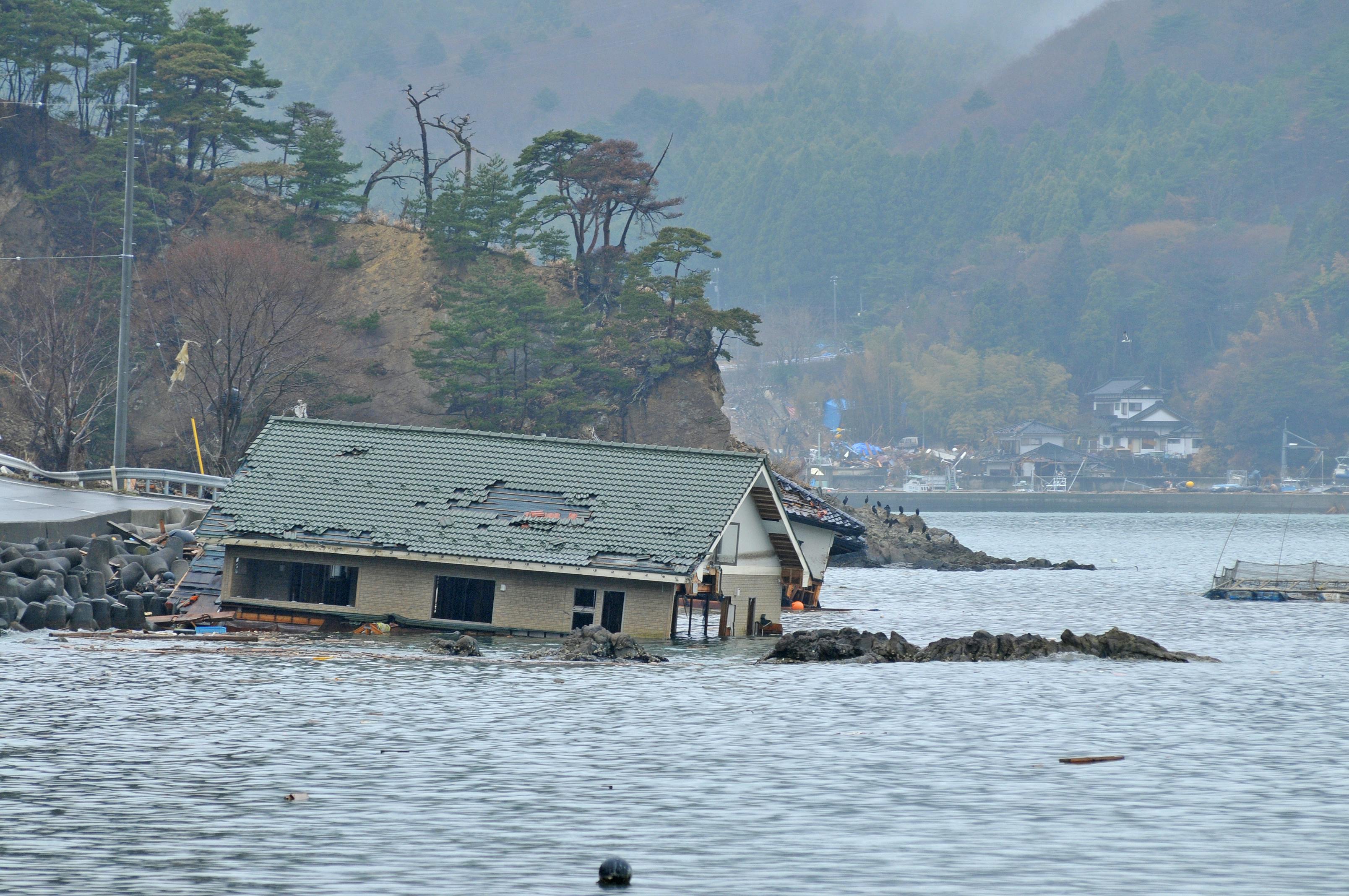
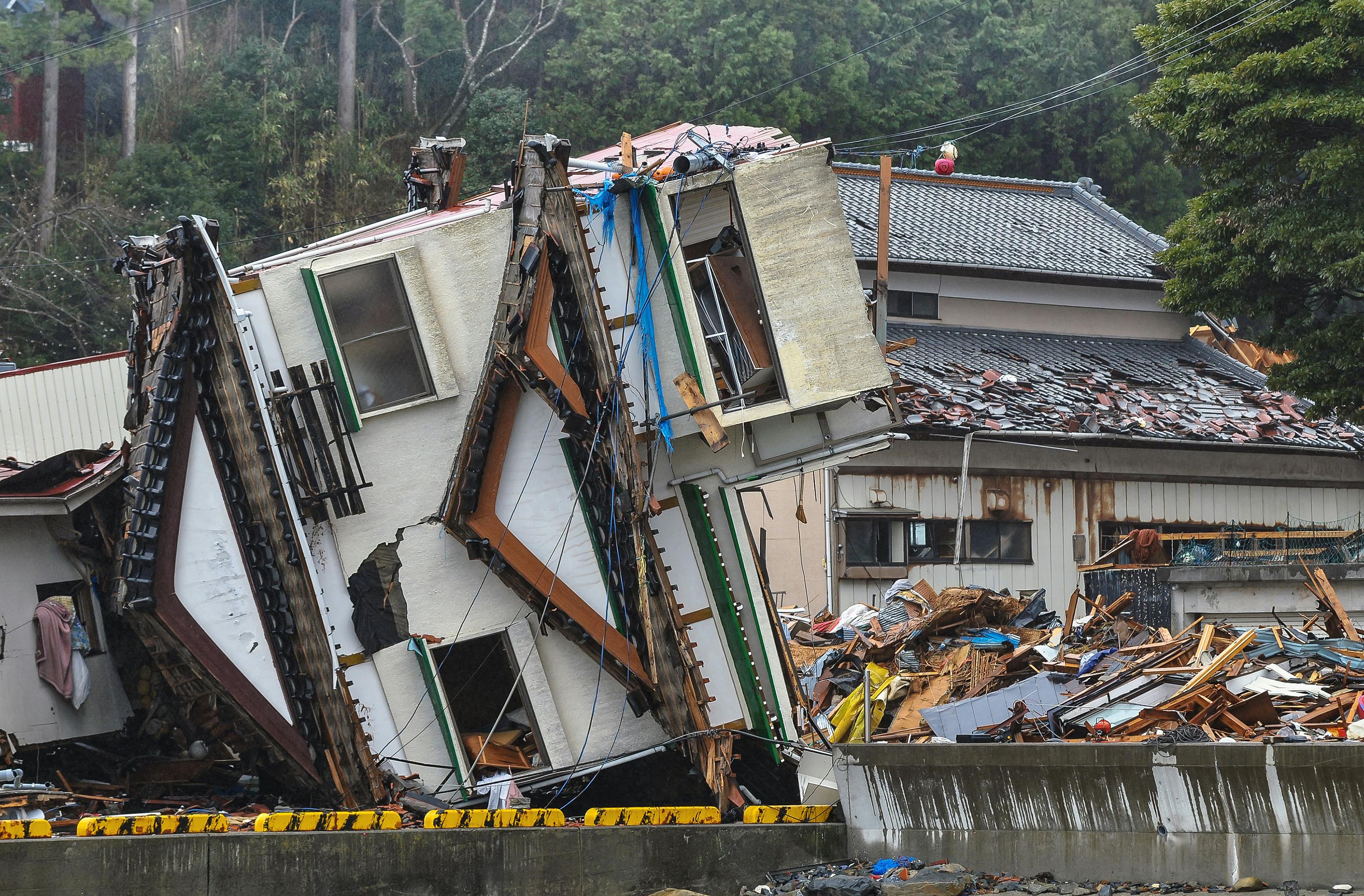
Destruction caused by the 2011 Tohoku earthquake and ensuing tsunami.
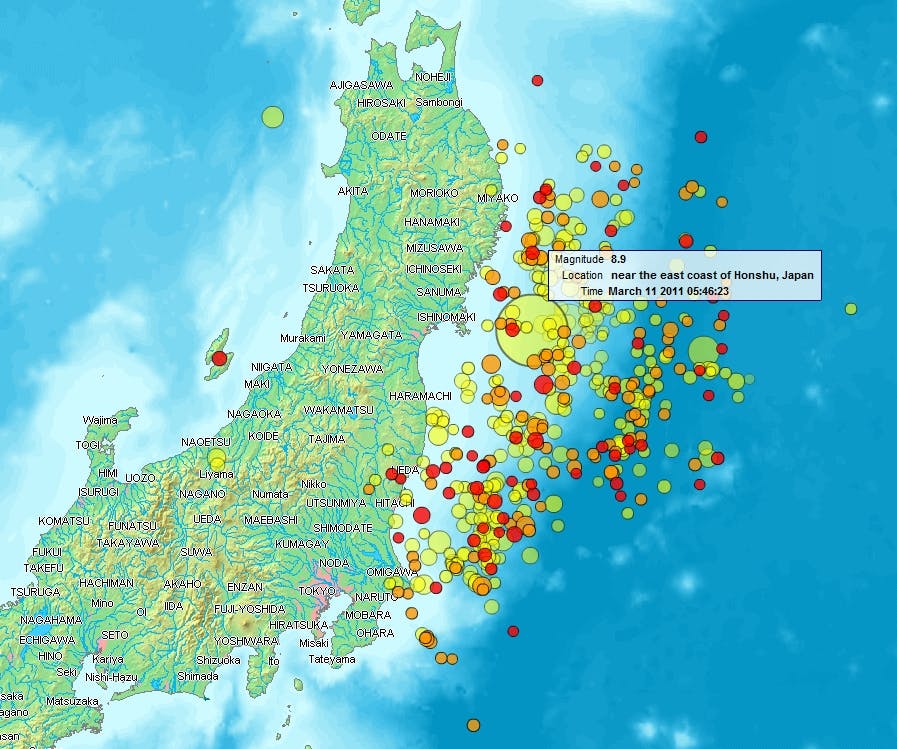
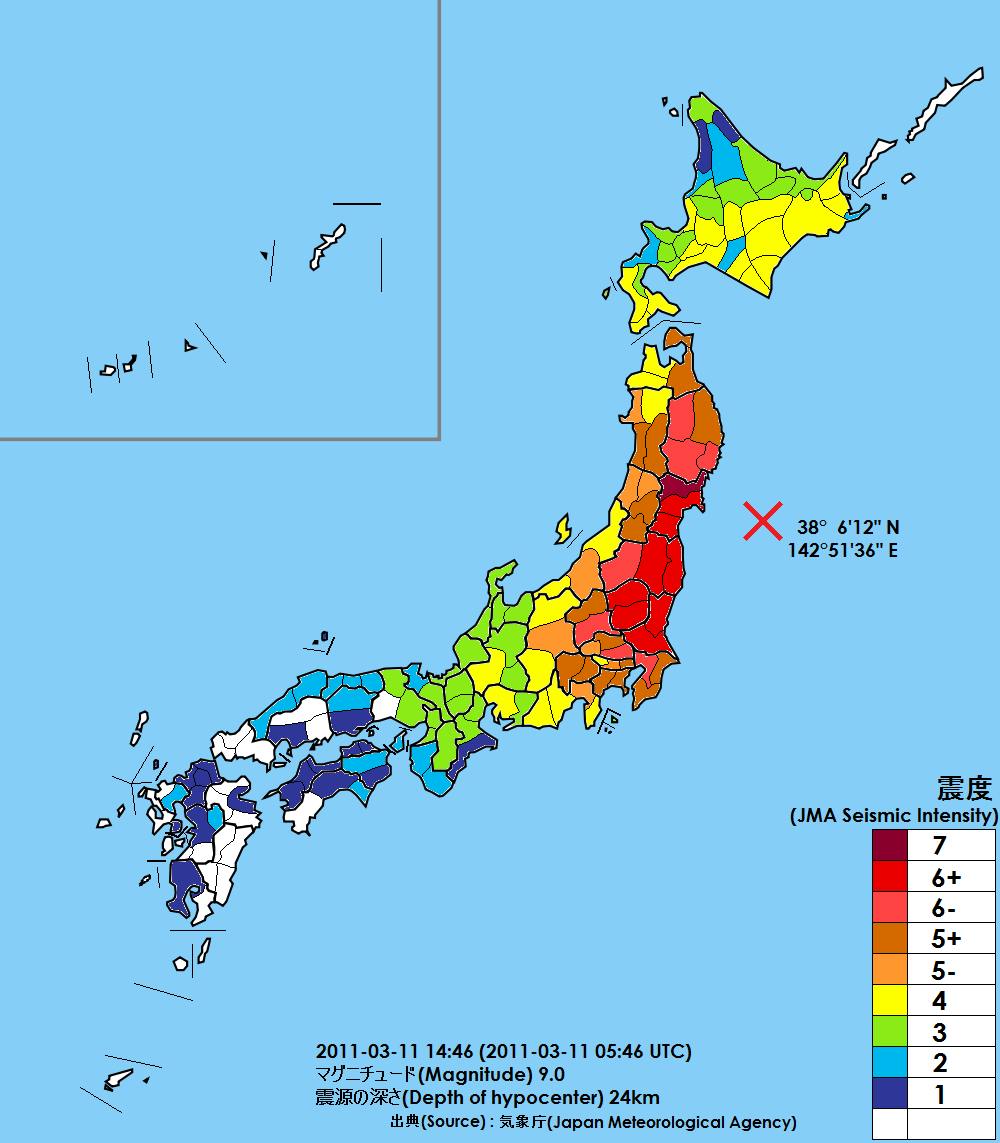
(Left) Map of Japan showing the epicentre of the great 2011 Tohoku earthquake and its aftershocks until 14 March 2011 at 11:20. The circles scale with magnitude, and colour indicates the date (light green: March 11; yellow: March 12; orange: March 13; red: March 14). (Right) Seismic intensities recorded across Japan during the Tohoku earthquake.
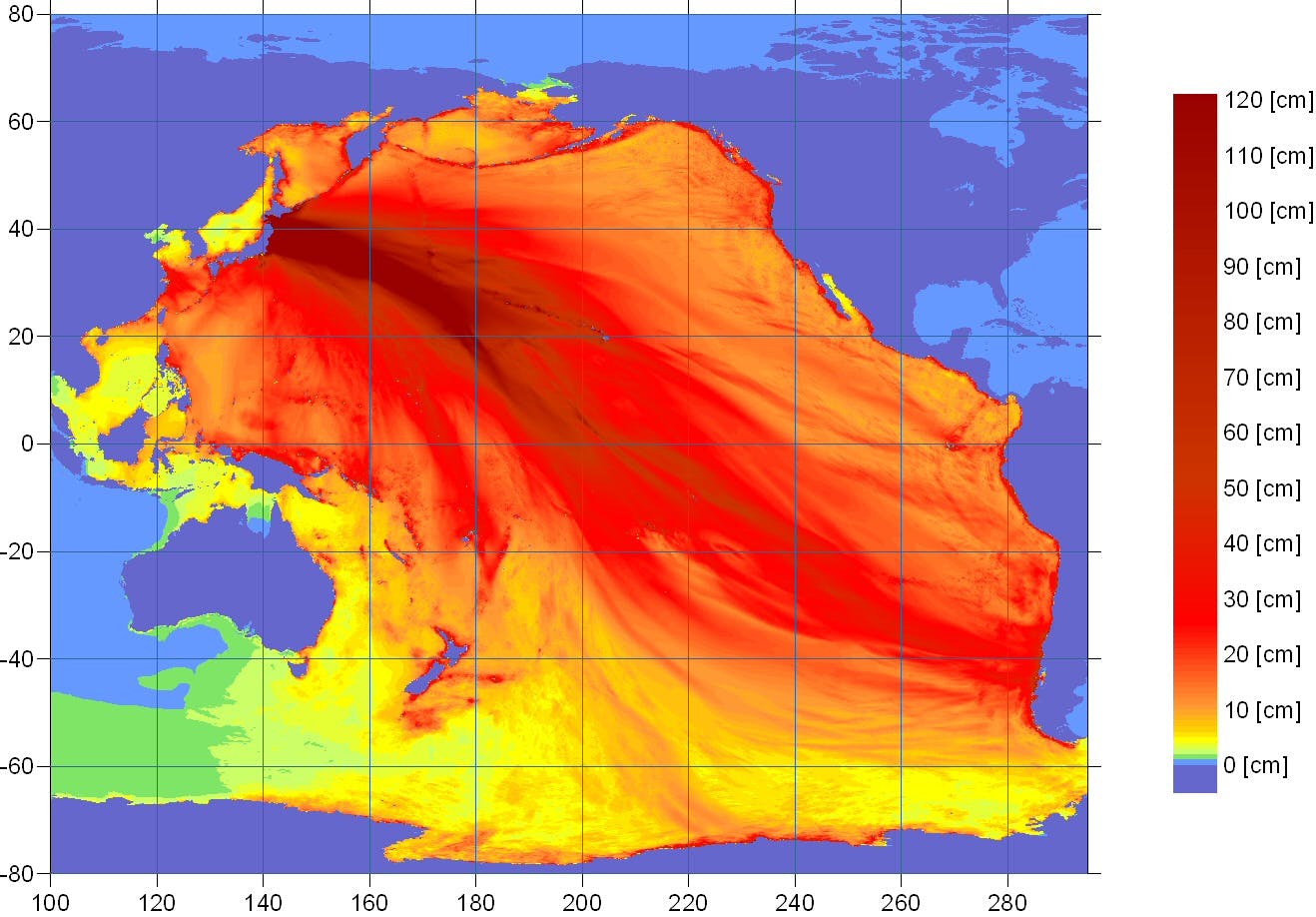
The propagation of the 2011 Tohoku tsunami is shown here by the energy distribution across the Pacific (U.S. NOAA).
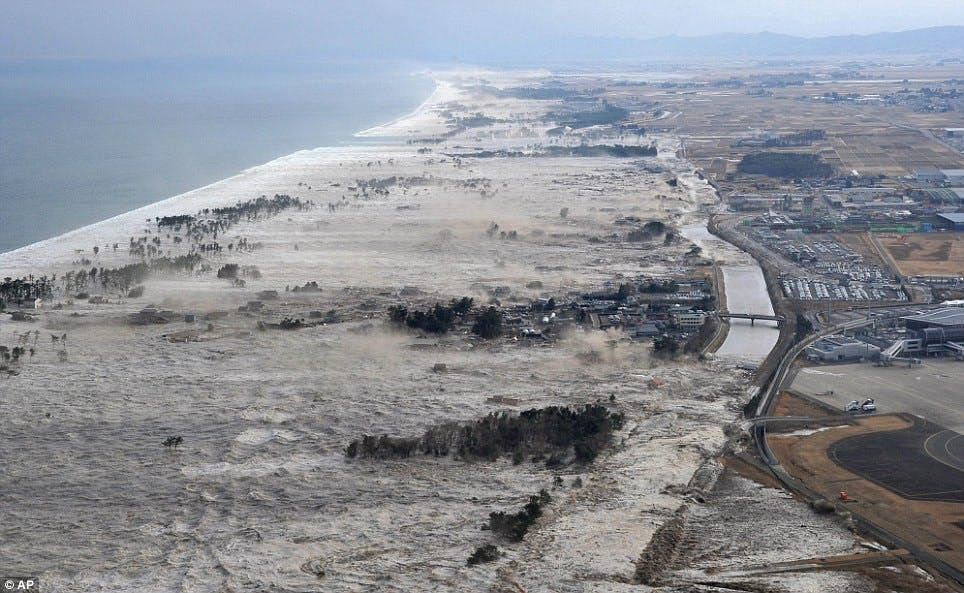
Tsunami waves generated by the 2011 Tohoku earthquake start inundating the Japanese coast.

After large earthquakes, the USGS produces a summary poster illustrating the tectonics and seismology of the region, like the one created for the Tohoku event.
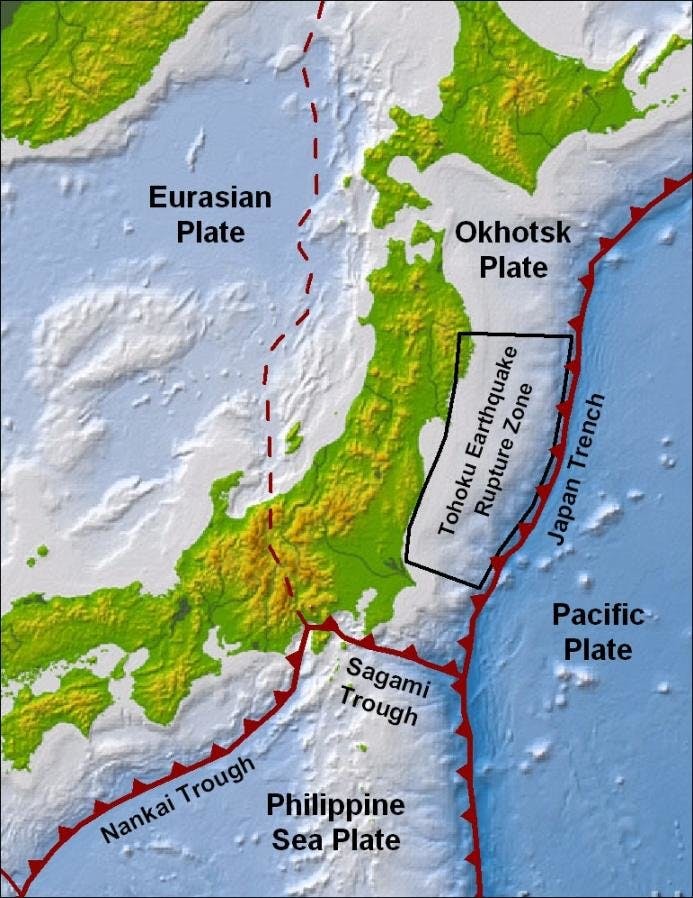
The Tōhoku earthquake ruptured one segment of the subduction zone between the Pacific plate (to the East) and the Okhotsk microplate (to the west).